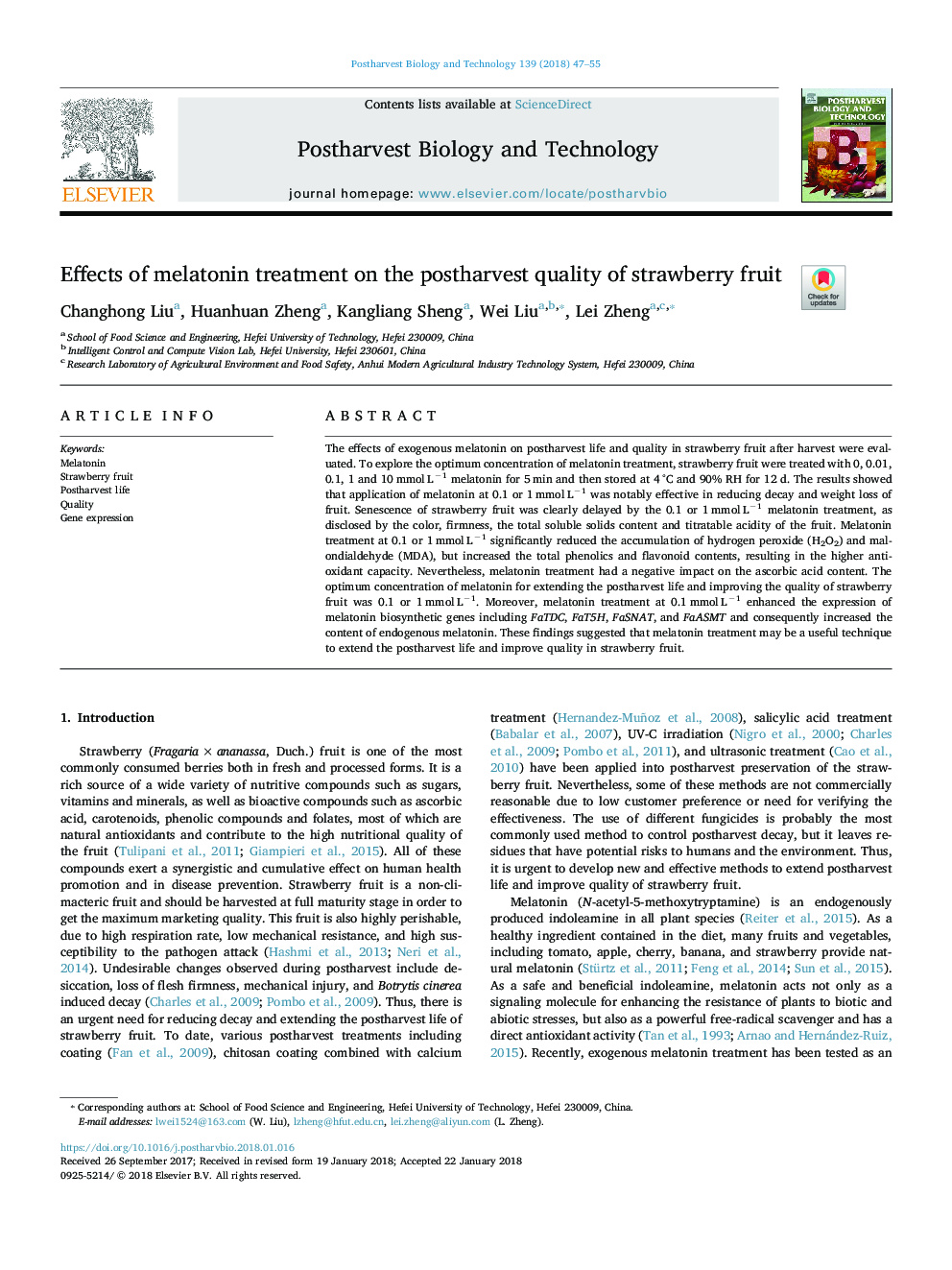| Article ID | Journal | Published Year | Pages | File Type |
|---|---|---|---|---|
| 8881957 | Postharvest Biology and Technology | 2018 | 9 Pages |
Abstract
The effects of exogenous melatonin on postharvest life and quality in strawberry fruit after harvest were evaluated. To explore the optimum concentration of melatonin treatment, strawberry fruit were treated with 0, 0.01, 0.1, 1 and 10â¯mmolâ¯Lâ1 melatonin for 5â¯min and then stored at 4â¯Â°C and 90% RH for 12 d. The results showed that application of melatonin at 0.1 or 1â¯mmolâ¯Lâ1 was notably effective in reducing decay and weight loss of fruit. Senescence of strawberry fruit was clearly delayed by the 0.1 or 1â¯mmolâ¯Lâ1 melatonin treatment, as disclosed by the color, firmness, the total soluble solids content and titratable acidity of the fruit. Melatonin treatment at 0.1 or 1â¯mmolâ¯Lâ1 significantly reduced the accumulation of hydrogen peroxide (H2O2) and malondialdehyde (MDA), but increased the total phenolics and flavonoid contents, resulting in the higher antioxidant capacity. Nevertheless, melatonin treatment had a negative impact on the ascorbic acid content. The optimum concentration of melatonin for extending the postharvest life and improving the quality of strawberry fruit was 0.1 or 1â¯mmolâ¯Lâ1. Moreover, melatonin treatment at 0.1â¯mmolâ¯Lâ1 enhanced the expression of melatonin biosynthetic genes including FaTDC, FaT5H, FaSNAT, and FaASMT and consequently increased the content of endogenous melatonin. These findings suggested that melatonin treatment may be a useful technique to extend the postharvest life and improve quality in strawberry fruit.
Related Topics
Life Sciences
Agricultural and Biological Sciences
Agronomy and Crop Science
Authors
Changhong Liu, Huanhuan Zheng, Kangliang Sheng, Wei Liu, Lei Zheng,
